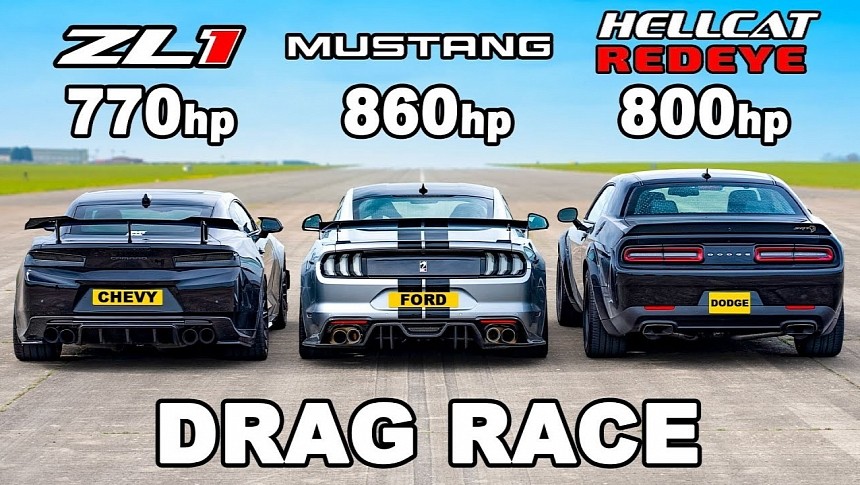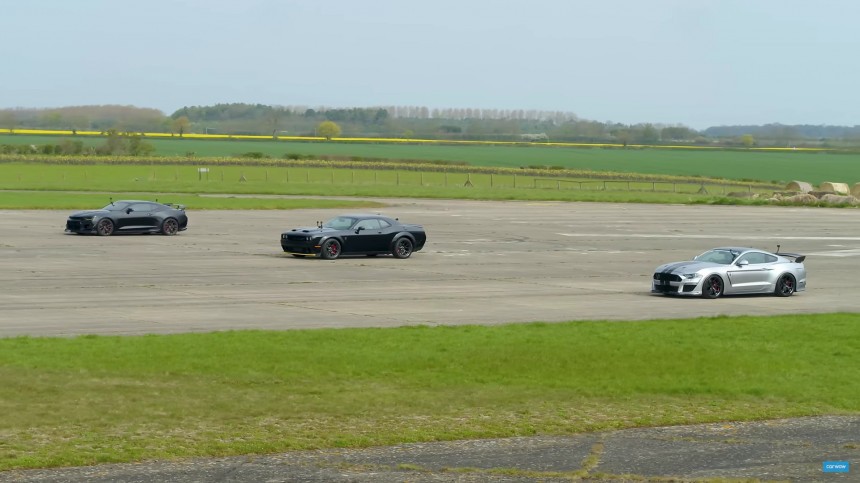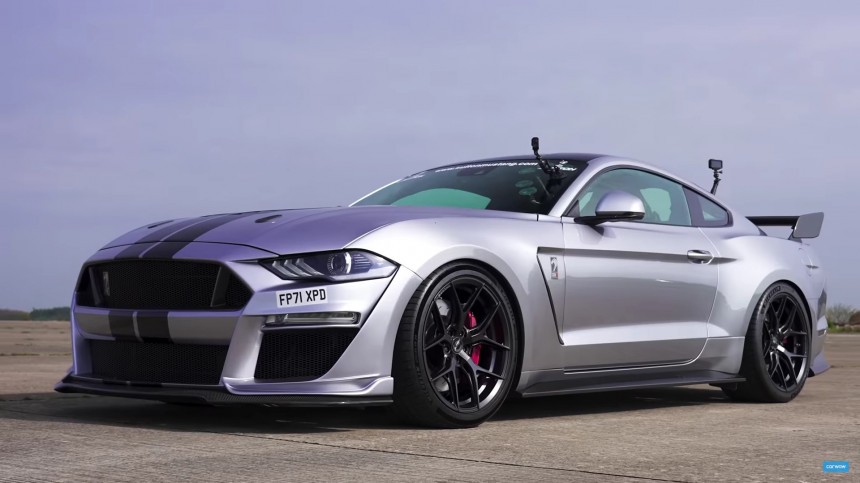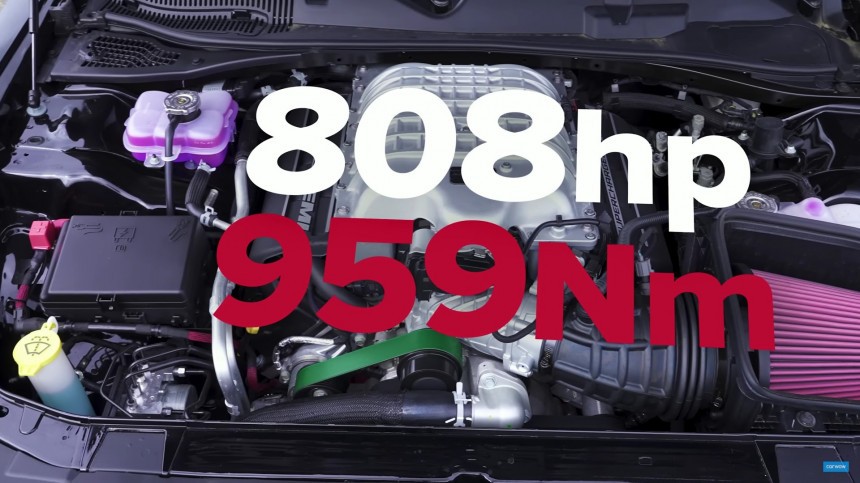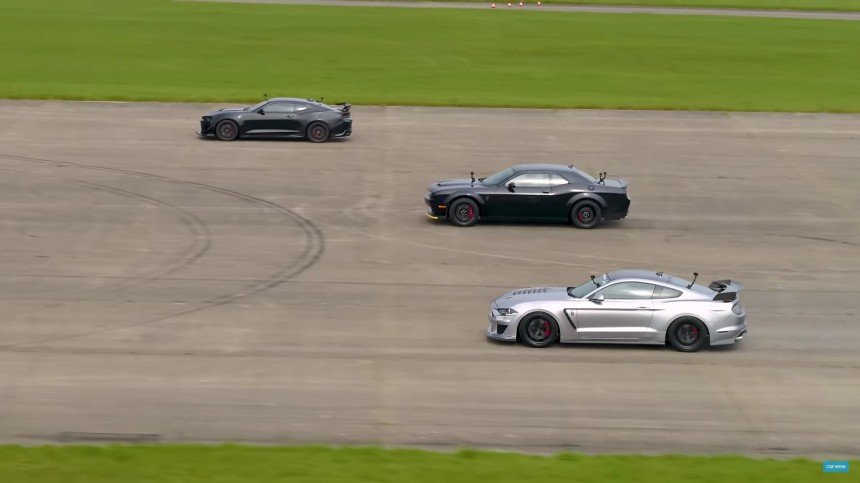lWhen the last piston in the history of humanity will have completed its final stroke and then surrendered to absolute oblivion, Detroit’s Big Three still won’t sign a drag strip truce to put their 440-yard brawls behind their muscle cars’ exhaust pipes. With electrification sounding the trumpets of triumph over the smoking ruins of the wall of Jericho big-blocks, the combustion-less future of the never-ending All-American teeth-grinding automotive hatred might look less spectacular than what we saw in the last six decades.
Ford put the Mustang on the road and almost fainted under its immediate success; having regained its composure, the American carmaker took the performance approach and made the Mustang worthy of its name.
GM seemed to have been swept right off its wheels by the new pony concept, and it waited over two years to respond with the Camaro. Meanwhile, Chrysler missed the party altogether and only decided to join just as the fun ended in 1970. However, to make up for the late show-up, Mopar set loose a duo of miscreants – the Challenger and its remodeled twin cousin, the Barracuda.
While Plymouth’s fish wasn’t new, its redesigned body style refreshed the three-way bare-knuckle fistfight between FoMoCo, General Motors, and Mopar. And the Challenger only set the wood on fire. After that momentous 1970 blaze of automotive glory, things went south for everyone, and it took a long while for the Big Three to set a face-off among their performance V8s.
Decades went by, technology finally found ways to counter emissions chokeholds, and gearheads of this millennium can enjoy tire-smoking quarter-mile adrenaline from the triad of crank-bending savages. Courtesy of carwow’s Mat Watson, a magnificently rowdy drag race between America’s greatest muscle car names is again possible.
Going from the eldest to the youngest – in order of nameplate appearance – we see a Ford Mustang, a Chevrolet Camaro, and a Dodge Challenger lining up for the 1,320-foot shootout. Naturally, being one of the most popular YouTube car channels, the cars aren’t exactly budget-friendly versions, but quite the opposite.
The Mustang is the tuned 5.0-liter V8 that lately demolished Europe’s fastest drag-racing BMW M3 without batting an eyelid. 859 PS and 902 Nm (847 hp / 665 lb-ft) go through a six-speed manual transmission to the Ford Performance T2-R Torsen Differential (3.73:1 ratio) between the rear wheels. “Keep it simple” has never failed, as long as simple does not equal basic. And this 2022 supercharged Ford Mustang is as far from basic as Neptune is from Detroit.
At 1.72 tons, the Ford is the least heavy of the Americans, a whisker under the Camaro’s 1.75 tons. This ZL1 Chevy has been tuned (just like the Blue Oval weapon of mass traction). Mainly through a ported throttle body and supercharger, resulting in 760 horsepower and 738 lb-ft (770 PS and 1,000 Nm) from the 6.2-liter V8.
It also has an upgraded induction kit, a stage two water-methanol injection system, and a bespoke exhaust line that makes this sound like its GT4 racing relative. An automatic, ten-speed gearbox puts the punishment to the ground via the rear axle.
The hell-forged Dodge is, unlike its rivals, bone-stock, but its Redeye nobility title is not for the faint-hearted. Equal in displacement to the GM Mustang-eating predator, the Challenger rings the Mopar heritage bell with a supercharged new-gen HEMI that fires 797 hp and 707 lb-ft of torque (808 PS and 959 Nm).
The Dodge immediately wins the body mass contest with its two-ton deadweight, and it’s the eight-speed auto tranny’s job to make the best out of the low bhp-per-ton index. Surprisingly, it takes the first race, pulling away like there’s no tomorrow. And, in a sense, there isn’t, at least for the Camaro, which forfeits with engine trouble.
Downgraded to a duel, this Big Three battle sees a historical tribute to the famous 1970 Ford v Chrysler NASCAR battle. (That time, Mother Mopar urged its Plymouth division to take the fight with its one-year-only Superbird). Today, the lightest and most powerful of the two – the manual gearbox Mustang – puts the Dodge in its place, even with the initial massive traction issues.
Overall, the cars’ best performances read a 12.5-second standing quarter-mile for the Mustang, 12.7 for the Hellcat Redeye, and 12.9 for the ZL1’s only run of the day. The weight disadvantage is evident from the start, as the Challenger is the slowest off the line, but it puts the power down better.
However, after scoring a close win in the first race against the other two adversaries, the Dodge fails to repeat the feat in the different events. Either that or the Mustang’s driver gets the knack of fiddling with the gear lever and clutch pedal.
To make matters even more despicable, the braking contest ensues a jumbo jet gap between the heavy Dodge and the carbon fiber-clad Mustang GT tuned by UK-based Clive Sutton. From 100 mph (161 kph) to a dead stop, the Challenger puts a real-estate-sized distance between it and the far superior-stopping Ford.
GM seemed to have been swept right off its wheels by the new pony concept, and it waited over two years to respond with the Camaro. Meanwhile, Chrysler missed the party altogether and only decided to join just as the fun ended in 1970. However, to make up for the late show-up, Mopar set loose a duo of miscreants – the Challenger and its remodeled twin cousin, the Barracuda.
While Plymouth’s fish wasn’t new, its redesigned body style refreshed the three-way bare-knuckle fistfight between FoMoCo, General Motors, and Mopar. And the Challenger only set the wood on fire. After that momentous 1970 blaze of automotive glory, things went south for everyone, and it took a long while for the Big Three to set a face-off among their performance V8s.
Going from the eldest to the youngest – in order of nameplate appearance – we see a Ford Mustang, a Chevrolet Camaro, and a Dodge Challenger lining up for the 1,320-foot shootout. Naturally, being one of the most popular YouTube car channels, the cars aren’t exactly budget-friendly versions, but quite the opposite.
The Mustang is the tuned 5.0-liter V8 that lately demolished Europe’s fastest drag-racing BMW M3 without batting an eyelid. 859 PS and 902 Nm (847 hp / 665 lb-ft) go through a six-speed manual transmission to the Ford Performance T2-R Torsen Differential (3.73:1 ratio) between the rear wheels. “Keep it simple” has never failed, as long as simple does not equal basic. And this 2022 supercharged Ford Mustang is as far from basic as Neptune is from Detroit.
It also has an upgraded induction kit, a stage two water-methanol injection system, and a bespoke exhaust line that makes this sound like its GT4 racing relative. An automatic, ten-speed gearbox puts the punishment to the ground via the rear axle.
The hell-forged Dodge is, unlike its rivals, bone-stock, but its Redeye nobility title is not for the faint-hearted. Equal in displacement to the GM Mustang-eating predator, the Challenger rings the Mopar heritage bell with a supercharged new-gen HEMI that fires 797 hp and 707 lb-ft of torque (808 PS and 959 Nm).
Downgraded to a duel, this Big Three battle sees a historical tribute to the famous 1970 Ford v Chrysler NASCAR battle. (That time, Mother Mopar urged its Plymouth division to take the fight with its one-year-only Superbird). Today, the lightest and most powerful of the two – the manual gearbox Mustang – puts the Dodge in its place, even with the initial massive traction issues.
Overall, the cars’ best performances read a 12.5-second standing quarter-mile for the Mustang, 12.7 for the Hellcat Redeye, and 12.9 for the ZL1’s only run of the day. The weight disadvantage is evident from the start, as the Challenger is the slowest off the line, but it puts the power down better.
To make matters even more despicable, the braking contest ensues a jumbo jet gap between the heavy Dodge and the carbon fiber-clad Mustang GT tuned by UK-based Clive Sutton. From 100 mph (161 kph) to a dead stop, the Challenger puts a real-estate-sized distance between it and the far superior-stopping Ford.
